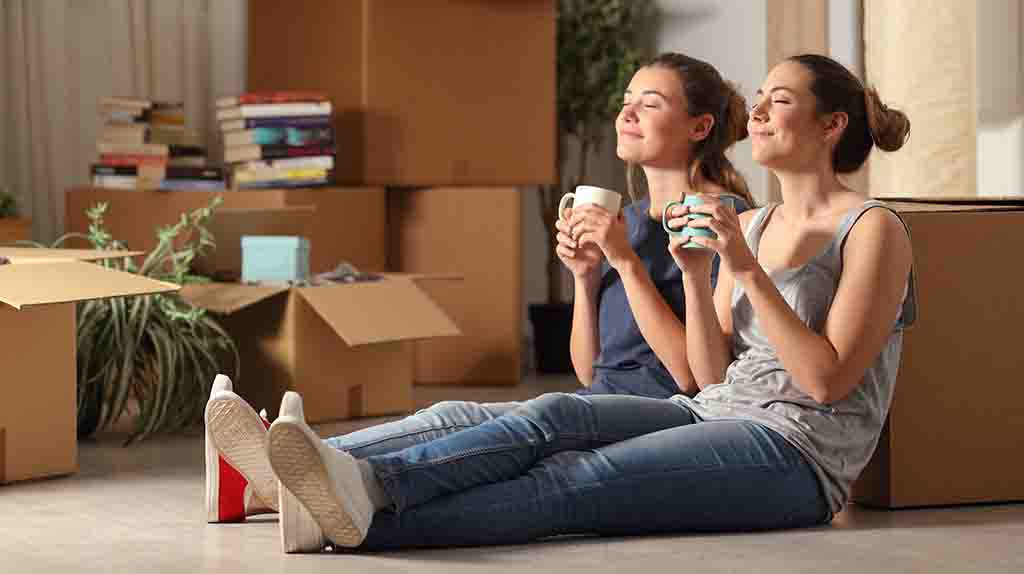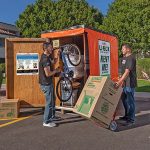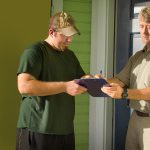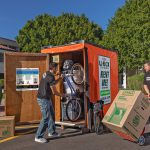Moving into your first apartment can be an exciting and overwhelming experience at the same time. Whether you’re moving out of your parent’s house, living off campus for the first time, graduating from college, or moving from a house to an apartment, you’ll need to be prepared for everything you need and don’t need.
DOWNLOAD FIRST APARTMENT CHECKLIST
When you’re finished getting everything on our checklist, you can hire local moving labor on the Moving Help® Marketplace to create a reliable and affordable move while avoiding the heavy lifting yourself.
It’s also important to keep in mind that you don’t need to get everything at once, especially when moving on a budget. You can buy most essentials at once, then buy a few more essentials, and then buy some optional items when you’re ready.
Bedroom
- Mattress
- Mattress topper/mattress pad
- Box spring or foundation spring
- Bed frame
- Sheets
- Comforter or blankets
- Pillows and pillowcases
- Nightstand or small table
- Dresser
- Clothes hangers/coat hangers
- Laundry hamper
- Iron and ironing board or a clothes steamer
Optional items that you might want or need but could buy later:
- Reading lamp
- Mirror
- Floor lamp (If the lighting is poor)
- Alarm clock
- Window treatments
- Desk and chair (If you work from home or go to school)
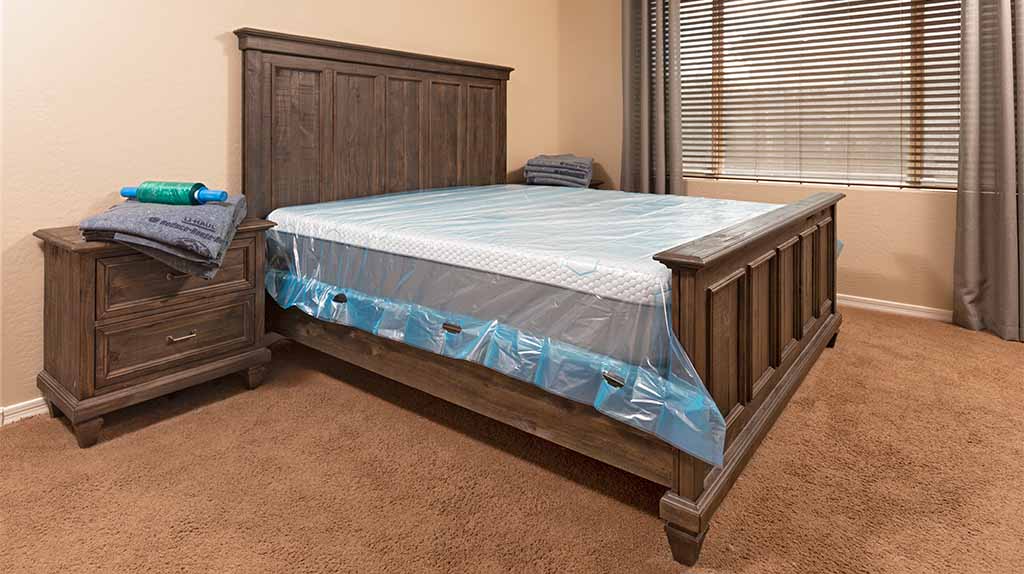
If you have a small bedroom space, focus on ways you can create storage space to keep yourself organized. You might want to consider storage containers that fit underneath your bed. Additionally, sleep is important for your mental health and overall well-being so getting a mattress isn’t something you should skimp on.
Kitchen
- Plates
- Bowls
- Silverware (Forks, spoons, and knives)
- Mugs/coffee cups
- Water glasses
- Reusable water bottles
- Plastic water bottles
- Dish towels
- Kitchen trash can (If your unit doesn’t come with one)
- Paper towels
- Food storage containers or plastic bags
- Cutting board
- Mixing bowls
- Measuring cups
- Colander
- Bottle/can/wine opener
- Aluminum foil, plastic wrap, wax paper, or all three
- Table and chairs or bar stools
- Dish soap
- Kitchen scrubbers or sponges
- Pots and pans (2-quartz saucepan, large stock pot, baking sheet, cookie sheet, or baking/casserole dish)
- Coffee pot/kettle
- Microwave (If your unit doesn’t come with one)
- Cooking utensils (Spatulas, wooden spoon, slotted spoon, whisk, cutting knives set, or ladle)
- Oven mitts
- Ice cube tray (If your freezer doesn’t make ice)
Refrigerator items
- Eggs
- Milk
- Juice
- Butter
- Cheese
- Fresh fruits
- Fresh veggies
Freezer items
- Frozen pizza
- Frozen dinners
- Frozen meat
- Frozen fruits
- Frozen veggies
- Ice cream or frozen desserts
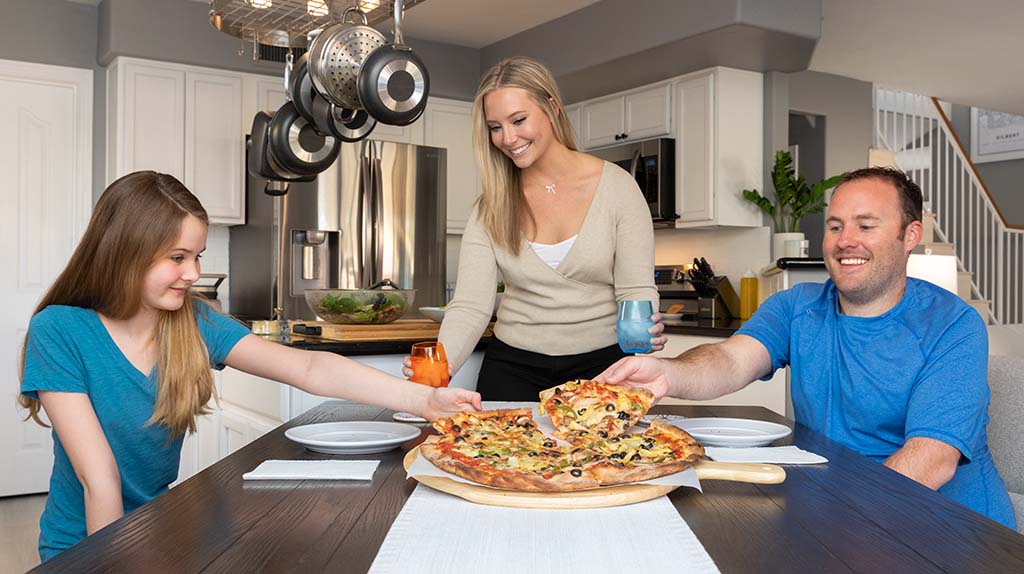
Pantry items
- Rice
- Bread
- Cereal
- Dried pasta
- Pasta sauce
- Salt
- Pepper
- Spices you cook with (To save money, buy spices as you need them vs. buying a spice rack)
- Oil
- Brown and white sugar
- Flour
- Baking powder
- Baking soda
- Vanilla extract
- Vinegar
- Ketchup
- Mustard
Optional essential items that you might want or need but could buy later:
- Blender
- Crockpot or Instant Pot
- Serving utensils
- Serving platters
- Chip clips
- Toaster/toaster oven
- Hand/electric mixer
- Paper towel holder
- Silverware organizer
- Water filter
- Dish drying rack
Everyone is different when it comes to the kitchen. Some people turn on their stove once a month just to make sure it works while others spend most of their time in the kitchen. You might need more or less than what’s on our list, but our list gives you the basics to get you started.
Plus, meal planning and an organization system for your kitchen can make it a much more inviting and utilized space.
Bathroom
- Toiletries (Toothbrush, toothpaste, body wash, shampoo, conditioner, deodorant, shaving cream, etc.)
- Bath towels
- Hand towels
- Soap
- Toilet scrubber
- Toilet cleaning solution
- Toilet paper
- Toilet holder (If your unit doesn’t come with one)
- Plunger
- Tissues
- Bathroom rug
- Shower curtain and rod (If your unit needs one)
- Shower curtain hooks (If your shower curtain doesn’t come with them)
- Bathroom waste basket
Optional items that you might want or need but could buy later:
- Shower curtain liner
- Air freshener spray
- Toothbrush holder
- Soap dispenser
- Multiple hand towels
- Multiple bath towels
- Face towels
- Lotion
- Water cup
Depending on what your apartment’s bathroom looks like you might need fewer items than what’s needed on the essentials list, or you might need everything and then some. If you have extra money to spend on your bathroom, consider adding additional accessories or décor to enhance your bathroom.
Living Room
- Couch (If a couch is out of your budget, try bean bags or plastic chairs with cushions to get you by until you can afford a couch)
- Coffee table
- Television
- Entertainment unit/setup
- Floor lights (If the lighting is poor)
Optional items that you might want or need but could buy later:
- Rug
- End tables
- Bookshelf
- Décor (Houseplants, candles, vases, or artwork)
- Streaming devices
- Speakers
- TV wall mount
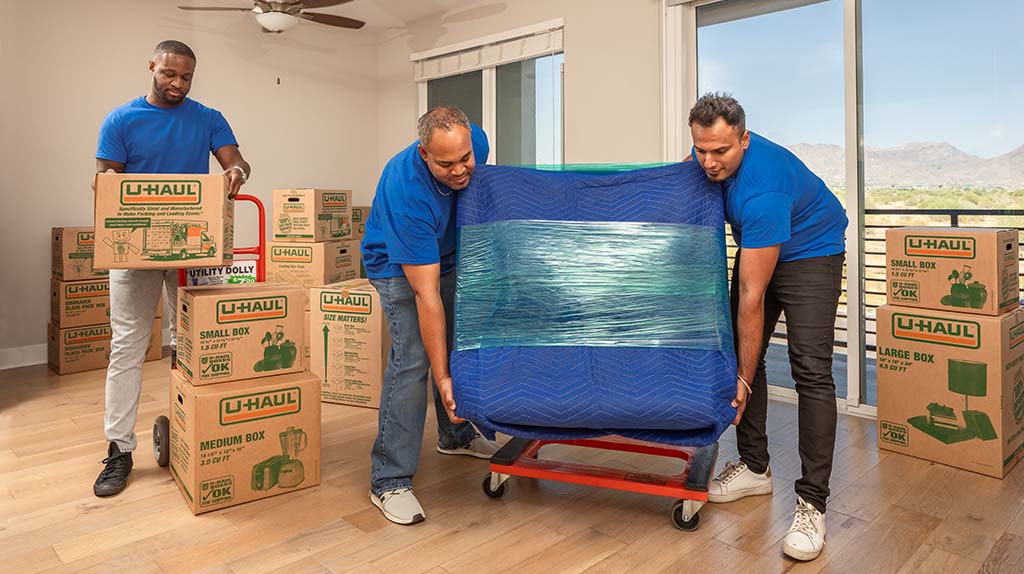
You only need a few chairs and a coffee table to get you started. The key part about your living room is arranging your furniture in a way that creates a comfortable and inviting living space.
If you haven’t already, download our ultimate checklist below.
DOWNLOAD FIRST APARTMENT CHECKLIST
Home Toolkit
- Screwdriver set (Make sure you have a Phillips and flathead as well)
- Hammer
- Measuring tape
- Duct tape
- Crescent wrench
- Hammer
- Channel lock pliers
- Nail and wall hooks (or anchors with screws built into them)
- Command strips
- A drill
- A drill bit set
Optional items that you might want or need but could buy later:
- Step ladder or step stool
- Stud finder
- Spackle and putty knife
Your home toolkit might be smaller than what’s provided depending on what home improvements you plan on doing to your apartment such as hanging artwork and pictures. Living in an apartment means you can make a maintenance request to have something fixed that’s broken.
Cleaning
- Broom and dustpan or vacuum (Get a handheld vacuum if you don’t want to use a broom and dustpan but a regular-sized vacuum is too expensive)
- Spray mop with washable pads or a mop and bucket
- Multi-purpose cleaner and washable cloths
- Laundry detergent
- Laundry softener
- Garbage bags
Optional items that you might want or need but could buy later:
- Stain remover
- Color catchers
- Microfiber cloths
- Cleaning wipes
You should create a cleaning routine for your new apartment. Whether you’re a clean freak or a complete slob, a cleaning schedule will keep you on track on how often you need to clean your new apartment. You’ll know what needs to be done and when it needs to be done.
Moving Help has an apartment cleaning checklist. If you leave your apartment, we also have guides for how to get your cleaning deposit or security deposit back.
First-Aid Kit
- Band-Aids
- Thermometer
- Benadryl, Advil, Aspirin, etc.
- Antacids
- Tweezers
- Small scissors
- Aloe
- Emergency or every day personal medicine
Optional items that you might want or need but could buy later:
- Cold/flu medicines
- Cough drops
- Cough syrup or pills
- Large bandages or wraps
- Ice packs
- Cotton balls
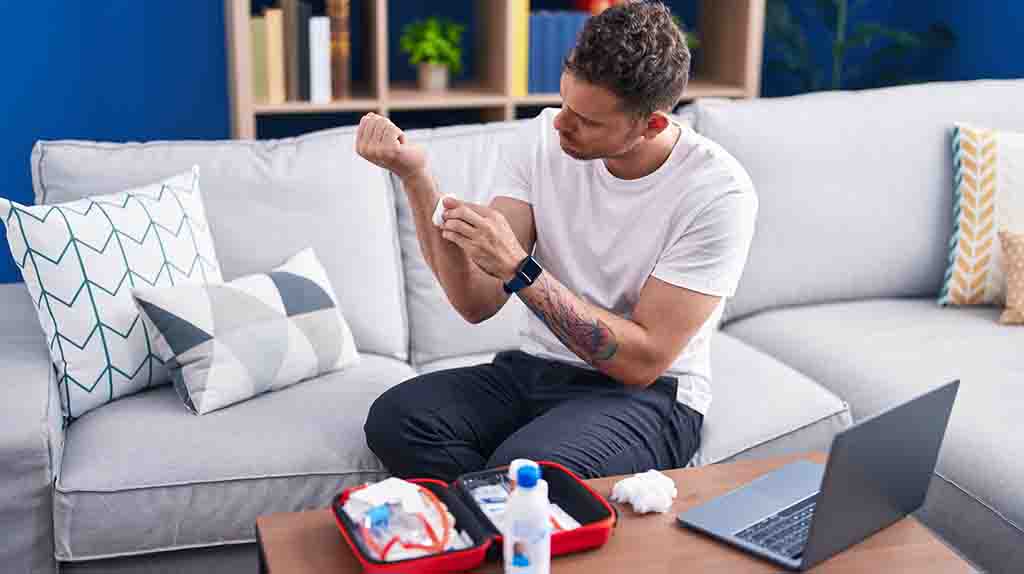
Unless you’re Wolverine, you’ll eventually get sick. It’s better to be prepared and have those medicines on-hand rather than having to go out in public to pick up medicine while you’re feeling miserable. You also should get meds for headaches, stomachaches, cuts, or sunburns.
Safety
- Smoke detector
- Carbon monoxide detector
- Fire extinguisher (If your unit doesn’t come with one)
Optional items that you might want or need but could buy later:
- Matches or lighters
- Flashlight
- Security cameras
Your home should come with the three essential items automatically — unless your apartment doesn’t have any gas. If not, grab those items immediately. Depending on where you live, investing in a good flashlight or matches or lighters could be beneficial if a storm knocks out your power.
Want more security for your safety? Consider installing security cameras inside and outside of your home.
Miscellaneous
- Umbrella
- Batteries
- Scissors
- Scotch tape
- Fans (If your unit doesn’t have one or not one in the bedroom and it gets hot where you live)
Optional essential items that you might want or need but could buy later:
- Light bulbs (If you want to replace them yourself vs. the maintenance team doing it)
- Space heaters
- Printer and printer ink
- Paper shredder
- Key hook
- Coat rack or over-the-door hooks
- HDMI cords
- Power strips/extension cords
These items might help personalize your home some more or help keep you organized. You might need these items every day or once or twice a month, but it’ll be nice knowing you have everything for your miscellaneous category for your apartment.
Where to Find Essentials for Your First Apartment
- Amazon
- Walmart
- Target
- IKEA
- Dollar Store
- Goodwill
- Salvation Army
- Facebook Marketplace
- Garage sales
These are all places where you can find essentials that are on our first apartment checklist. The options above include local stores, online retailers, and secondhand marketplaces. Each place has pros and cons, so consider all options before visiting them.
You should compare prices, read authentic reviews, and ensure quality when shopping for apartment essentials.
After you find what you need, you also can check out our moving guides for a:
Along with those guides, we also have an apartment moving checklist.
Gather Your Essential Items for Your New Apartment
Moving into your first apartment doesn’t have to be scary when you can rely on Moving Help’s ultimate guide for all your essentials. Once you’re done picking everything up for your new living space, hire Moving Help apartment moving labor.
The Moving Help Marketplace has local apartment moving labor providers who can move you quickly and efficiently, so you can enjoy your new apartment.

Frequently Asked Questions
Q: What do I really need for my first apartment?
A: Equip your first apartment with essentials for each living space: bedroom, kitchen, bathroom, living room, and miscellaneous items. Don’t forget a home toolkit, cleaning supplies, first-aid kit, and safety measures. From beds to cookware, our ultimate checklist has you covered.
Q: How do I live in my first apartment?
A: To live in your first apartment successfully, thoroughly research apartments, take your time during tours, understand your budget, explore the neighborhood, read the rental agreement, create a shopping list, and consider getting renters insurance. These steps will help you navigate the process and ensure a smooth transition to your new home.
Q: How much should I spend on my first apartment?
A: When budgeting for your first apartment, aim to spend around 30 percent of your income on rent, while also considering the landlord’s requirement for a rent-to-income ratio of one to three. This ensures that you can comfortably afford the rent and have sufficient income to meet other financial obligations.
Q: How do I financially prepare for my first apartment?
A: To financially prepare for your first apartment, create a budget that accounts for application fees, move-in expenses, and ongoing monthly costs. Check your credit score, evaluate the need for a cosigner if necessary, and ensure your emergency fund is sufficient. Taking these steps will help you establish a solid financial foundation for a smooth transition into your new apartment.
